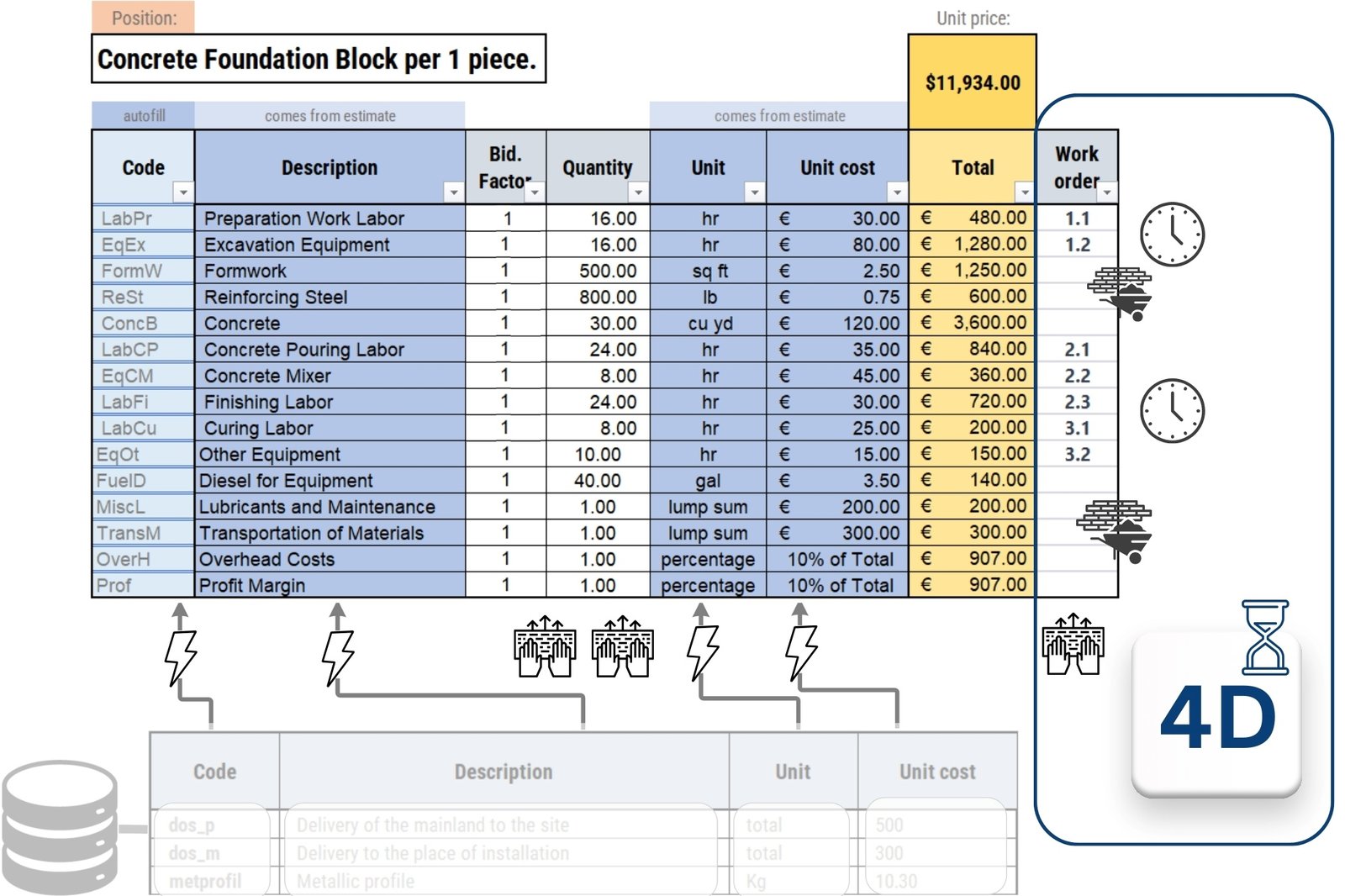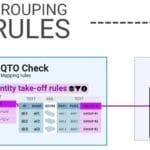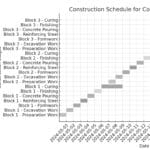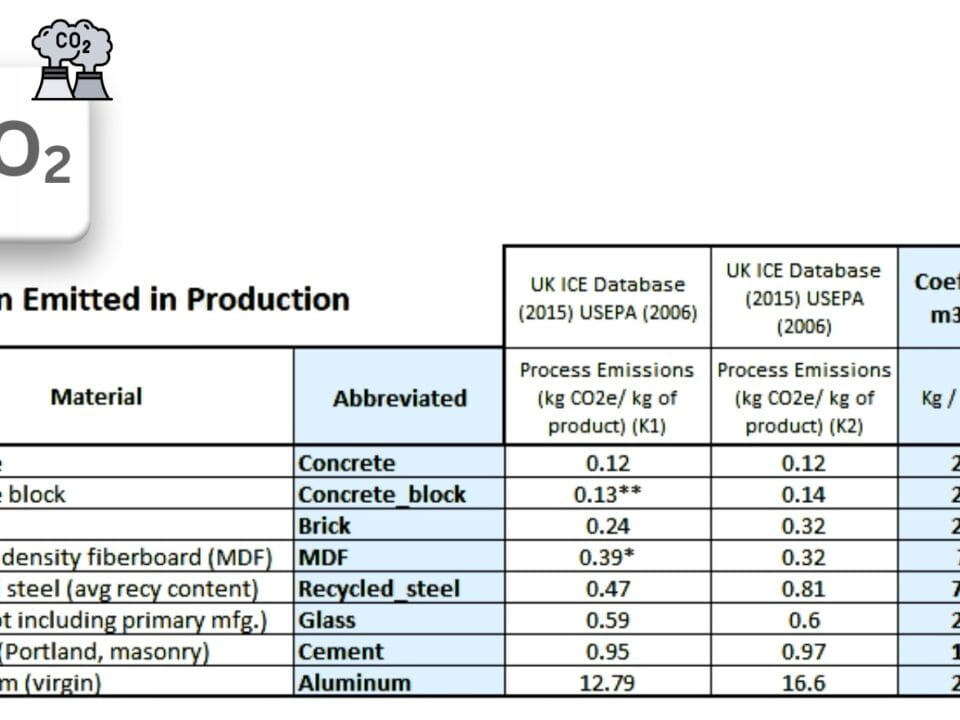In addition to costing, one of the key applications of design data in construction is the determination of time parameters, both for individual construction operations and for the entire project. The resource-based estimating method and the associated calculation database, discussed in detail in the previous chapter “Estimates and Estimates for Construction Projects”, are often used as a basis for automated calculation of time and the formation of a schedule for the execution of work.
The resource-based approach takes into account not only material costs but also time resources. In costing, each process can be assigned a work order attribute (Fig. 5.3-1 – Work order parameter) and the amount of time and cost associated with the execution of that process. These parameters are particularly important for describing operations that do not have a fixed market price and are not directly procurable – such as the use of construction equipment, worker employment, or logistical processes (which are usually expressed generally in hours). In such cases, the cost is not determined by the procurement department but directly by the implementing company based on internal norms or production rates (Fig. 5.3-1).

Thus, calculations at the costing level include not only fuel and material costs (purchase cost), but also the time spent on site by drivers, technicians and auxiliary workers. In the example shown (Fig. 5.3-1), the cost table represents the cost of installing a foundation block, including the component stages of the work, such as preparation, frame installation and concrete pouring, as well as the materials and labor required. At the same time, some operations, e.g. preparation work, may have no material costs, but may contain significant temporary labor costs expressed in man-hours.
To plan the work sequence (for the work schedule) on the construction site, the attribute “Work order” is manually added to the calculation table (Fig. 5.3-1). This attribute is specified in an additional column only for items whose unit of measure is expressed in time (hour, day). This attribute is in addition to the work code, description, quantity, unit of measure (parameter “Unit”) and costs. The numerical sequence (parameter “Work order”) of activities allows you to set the order of tasks to be performed on the construction site and use it for scheduling.





















